If I had known beforehand what this is really all about, honestly, I´d had thought twice. Installing the solar power array on GEKKO turns out to be far more complex than usually said in magazines or blogs and the more I talk to our electrician, the longer the process takes and the more days go by with very few small steps taken the more I am convinced that – communication-wise – this whole topic needs a re-boot of some kind. So, anyway, welcome to part 11 of my #boatenergy series.

You may have already noticed that I am a bit … let´s say disappointed or, less aggressively put, un-amused about the long time span this process takes. The easy it looks from the outside – the more hard it is to execute. So, today we finished the dress rehearsal for GEKKOs solar array and the success-rate is, I´d say, 50/50. Which is fine with me as long as Jens, the electrician, has a clue what is going on and can offer a perspective on how to deal with setbacks or challenges. So, here´s what we have done so far.
Wiring and connecting: What a hustle!
At first – normally logical but now that I have seen it in real life it is even more understandable – the whole project of installing a solar power array is way more than just making the panels and having them glued to the deck. I received a long list of items to buy from Jens, just a small selection of which you can see on the picture below.
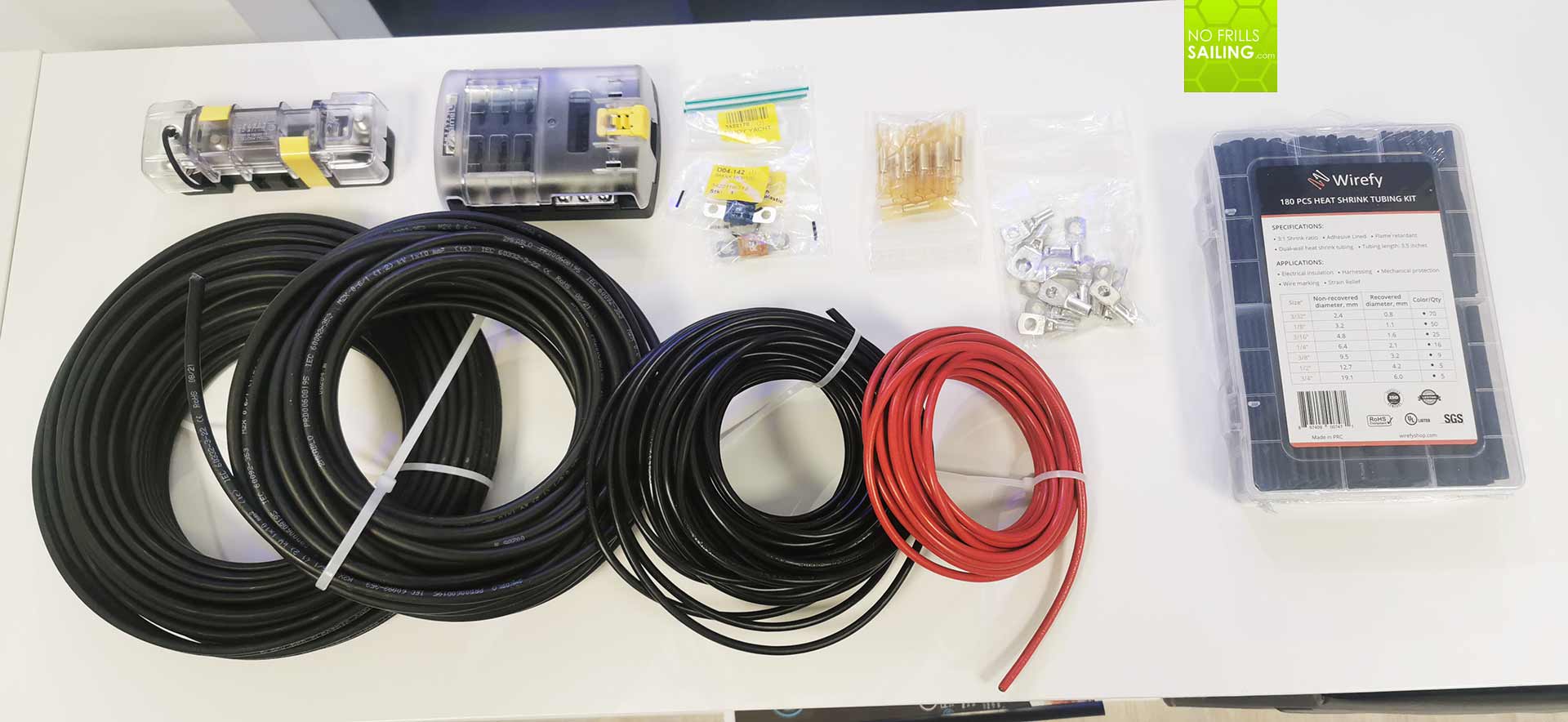
Of course, you might say, you need wired, you need, connectors, you need heat shrink tubes, zip ties and and and … yeah, it´s logical, but given the depth of details here, it was quite a hustle to have them ordered. Worse even: As there simply does not exist a wiring plan or a detailed installation guide that lists every item needed, it is a step-by-step process in which my electrician during the actual work tells me what he needs by discovering what he needs, I order it, it takes one or three days to ship, which creates another one or three day delay. Then he resumes work until he discovers the next item missing. Oh well …

First step was to connect the solar panels´ wires and have them routed to the aft section of the boat where the solar chargers would be situated. As my boat does not have any roofing panels or facing inside, the wires are visible all the time. We reviewed multiple choices of how we would have the wires running through all of the boat´s inside, but I decided to not try to cover the wires by ducts but have them just zip-tied to little connectors – rough as the boat´s character.
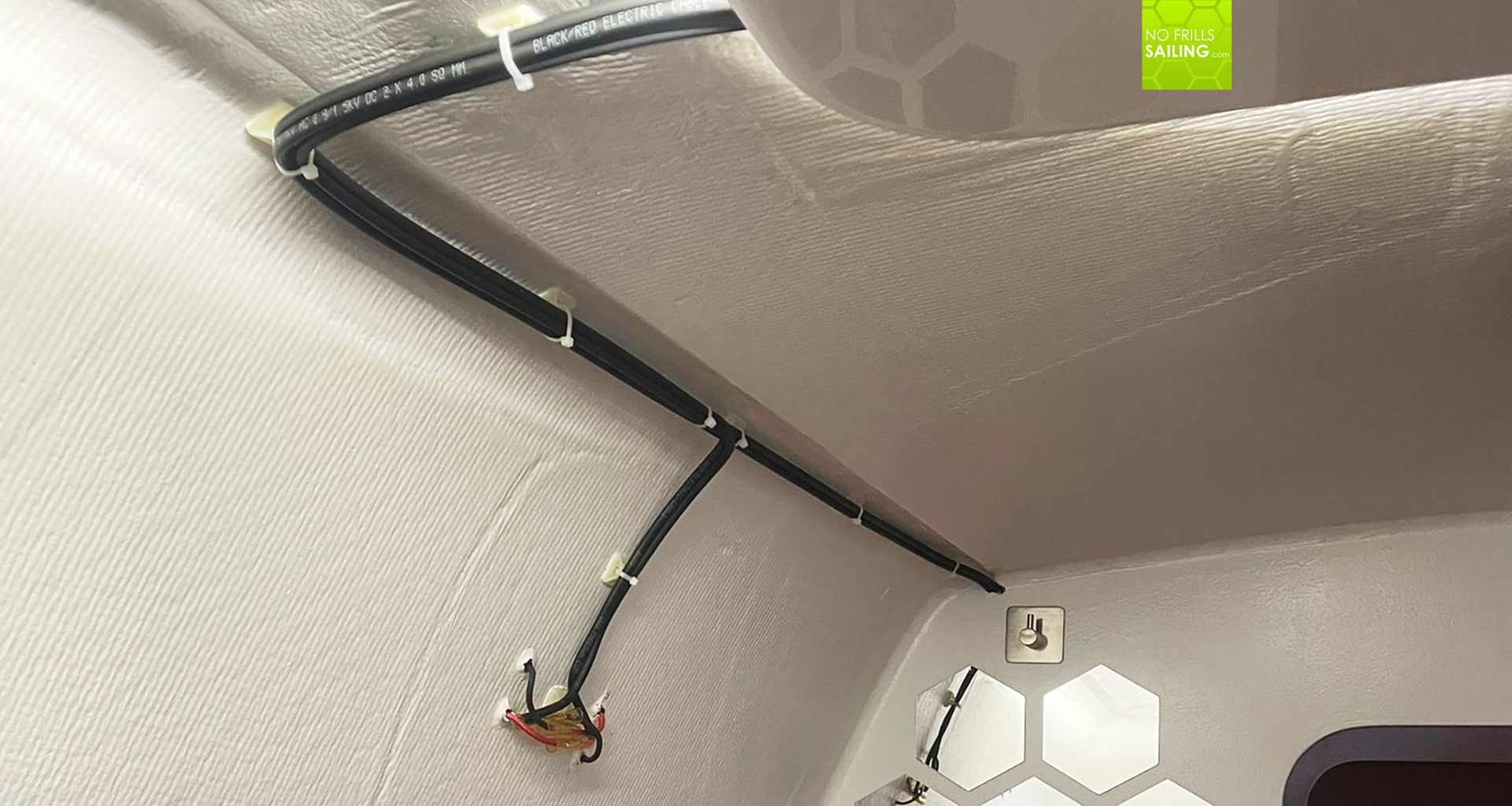
After marking the Xs where the connectors should be fitted on the roof, these had been glued onto the bare Gelcoat of the inside. Jens bought high quality wires with a high cross sections for not losing any precious solar energy along the way. The connections of the wires themselves had been heat shrink wrapped to ensure waterproof tightness. We also filled the bore holes leading to the panels outside with additional Sika Flex to have it 100% safe.

Somehow the brother of my Electrician got news of our work: I asked Jens to come up with a nice idea to cover the large 10 x 10 centimeters of wire-works right in the middle of GEKKOs salon, a kind of facing or a plastic cab that would make the wires disappear. At that time he smiled … and a day or so later he showed me a 3D-printed green Gecko, made by his brother. A nice nod to the concept of the boat. I find it´s a great idea and a nice Gimmick – fascinating to see what can be done with modern technology at home.
Real work …
So, connecting all the wires, which basically is solar panels to the chargers, chargers to the batteries and a new main switch, some more fuses and a main switch for the whole array, took two days. It may have been a lot less stressful if I had bought a bigger boat: Working in the cramped conditions of the First 27 SE was a pain in the ass for Jens. The poor guy had to squeeze himself between the narrow pilot berth in the back, working arse about face down below in the battery compartment where the majority of the installation is located.
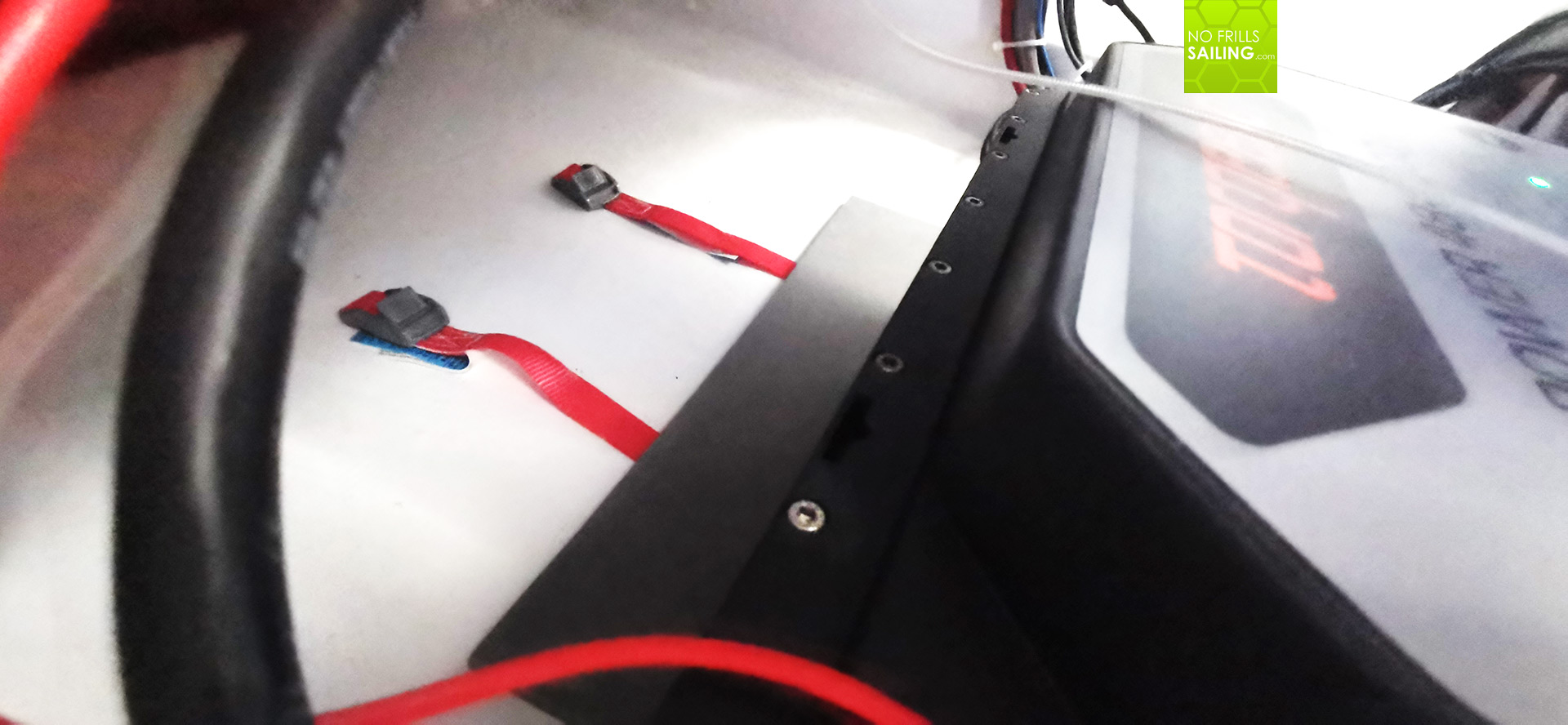
The idea was to take out the whole stern shower installation – which by the way was a mislead click in the Beneteau order system: I initially wanted to order the compressor fridge but somehow ticked the box of the option offered one line below, which was the stern shower. I don´t need this anyway since I am not a big bathing freak, so we took out the whole installation to make space under the cockpit where the water tank was located. Relocating the large Lithium battery astern for no more than 15 centimeters we created space in front of it to fit the auxiliary solar equipment.
Pre-wiring and setting up the network
Before returning to the cramped boat and having everything installed, bolted and glued to the boat, Jens emphasized to have it tested “on dry land” so he put together the whole setup inside GEKKO loosely which took him a full day of work. Yesterday I received a short whatsapp message stating that he was “ready to let the sun shine”. My ignition code to take a seat in my car and drive over to the workshop to see if it was working.
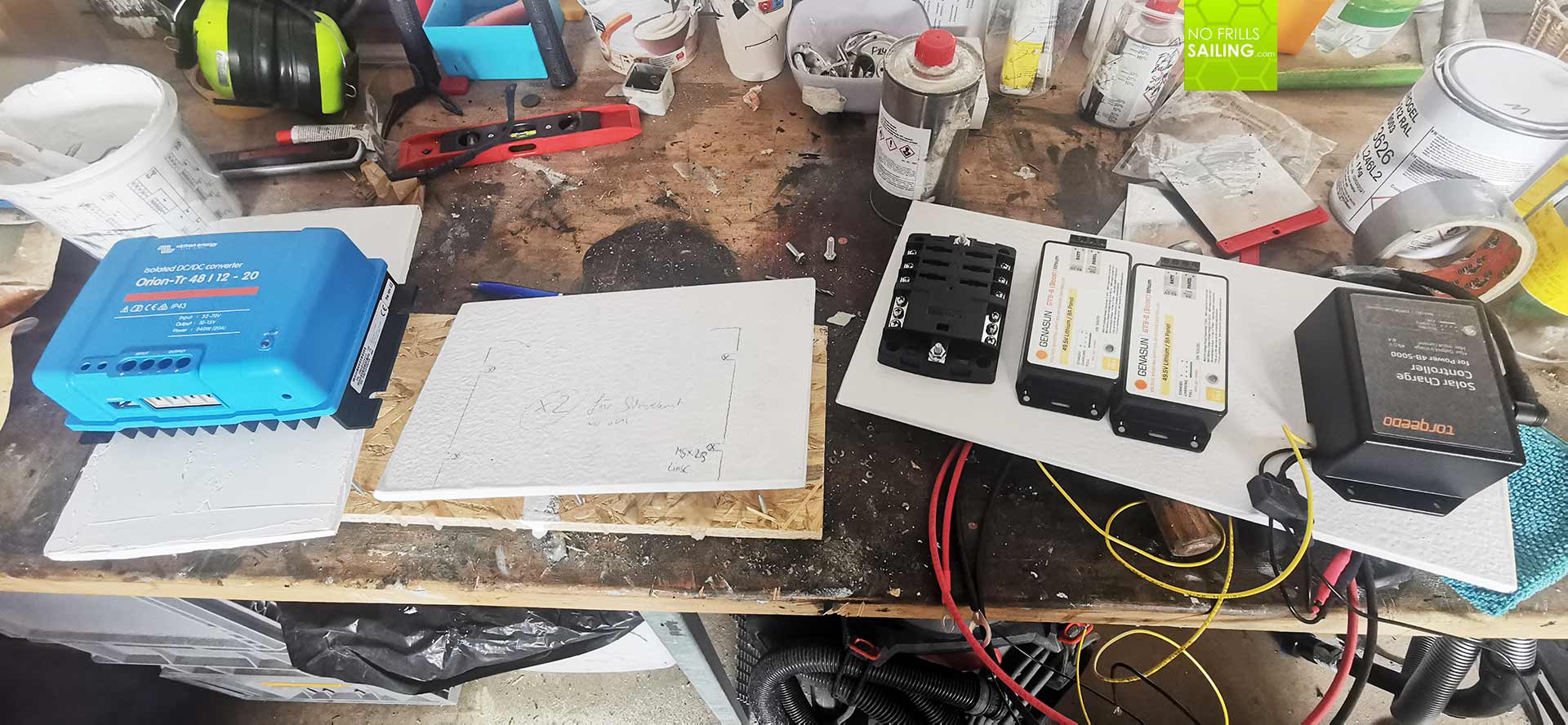
Jens had been setting up the whole installation in „dry mode” on the desk in our workshop. This was done to check if the wiring loops worked nicely, if the clamps had been sealing tight properly and also to insure a better working environment – inside of GEKKO every move is neck-wrenching, Jens told me he didn´t knew how many times he had been knocking his head at the ceiling. Also, by having taken measurements of the exact lengths of the wires, pre-wiring made a lot of sense outside the boat. Sure, in bigger yachts, this could be done inside without problems. After this, all was taken inside.
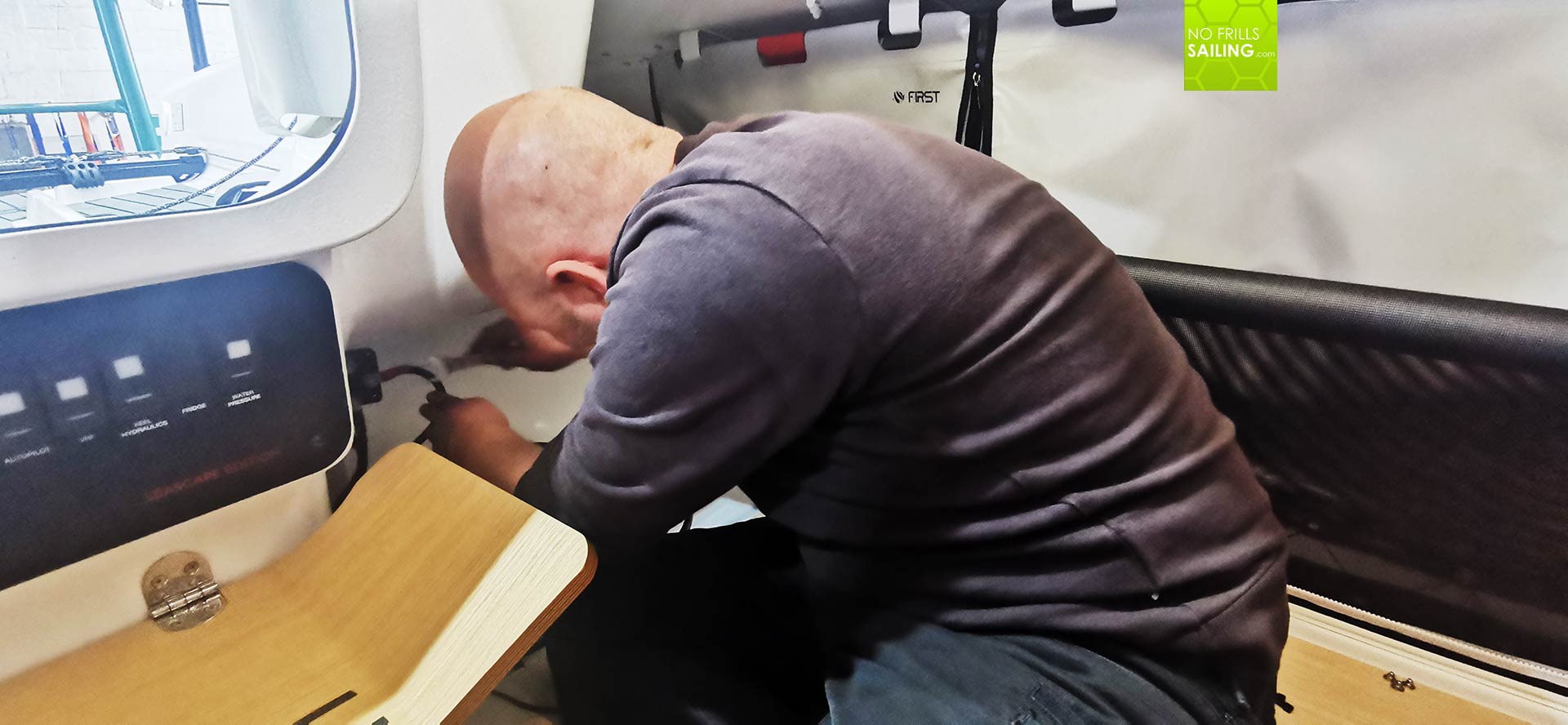
One or two hours later, the auxiliary gear was on spot, all wires connected and the pluses and minuses running all smoothly into each other. Jens worked his ass off, laying down on his belly, his arms deep down in the bowels of the ship, a small screwdriver connecting the ends of the wired to the boxes. “Well, that´s it, Lars!”, he said, and I was excited: “The first diodes start to blink!” Well, that was because solar power works … when there is light. The Gena Sun chargers started to work, even in the not-o-bright daylight conditions of our otherwise dark workshop. Nice! My heart jumped.

Before we would fix the wooden panels onto which Jens had mounted chargers, fuses and other gear, he suggested to have a live test and dress rehearsal. I couldn´t agree more: “Take away the shade on the big panel!”, he said an I removed a large piece of an old trade fair carpet we had placed onto the 130 Wp-central panel to not have the big electric current apparent in the wires. As we did, the according olar charger came to life as well – all three chargers started to be blinking green, which, I´d say, is a good sign.
Where is the Bug?
As on large fuse was still missing (here we are, delivery problems) Jens could not wire everything together 100 per cent right. But judging from a first impression, it worked. I thought, let´s check if the Torqeedo engine is still working … and folded down the engine, battery switch on, engine on and … nothing worked. Oh no. What could it be? Jens disconnected the CAN bus-system connection from the solar charger and the engine came back to life. Re-connected the solar charger to the BUS – no engine. A deep sigh, my disappointment was apparent. “Well, that didn´t work out quite so well”, he judged. And that was an understatement.
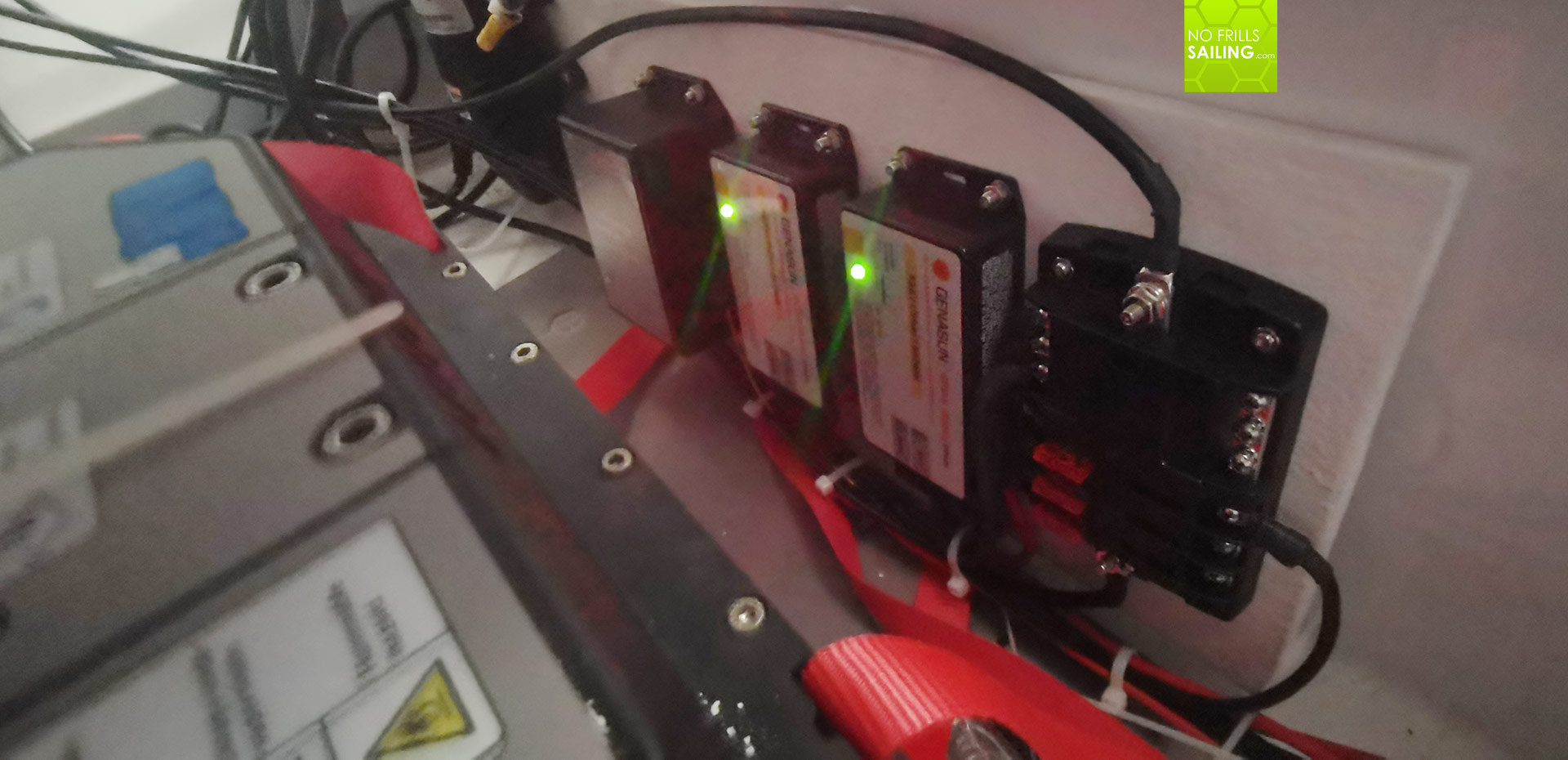
But where can the bug be? Jens proposed to wait for the last parts to be delivered, have everything set up properly and start the search for the bug. “We can also have measurements of the electric current and check via App the flow through the chargers – we will find it, no panic!” And he is right, we will find it. But here it is again: Installing a solar panel for your sailboat is far from being an easy as ABC-operation for sure. It needs a thorough Electrician who knows his work and how knows what he is doing. CAN bus-systems are a boon and bane at the same time, a black box at times as well. So now I hope for every Amazon truck passing by it would deliver my last parts so that we can tackle this after Easter holidays and have GEKKO ready to scoop up some solar power – and bring her back to the water at last.
You may also be interested in these articles:
All solar-power articles of this series by clicking on hashtag #solarpower
Small boat? Big fun!
Go small – go now!
